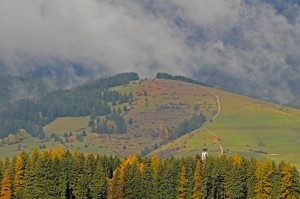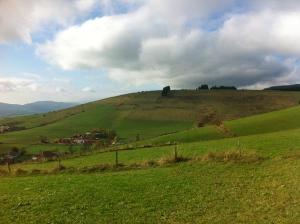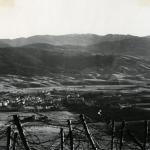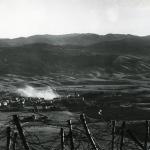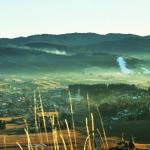
off
Il monte Katz
“In the afternoon he has climbed up Monte Katz, then from the Gharto woods he had dragged over the snow, a little below the cross, a big pile of dead branches cut from standing trees, and seated on a log in front of the Runzes’ hut. From un there he heard the bands playing full blast and the clamor of the people. After the phantasmagoria of the fireworks, and once the echoes had faded over the mountains and the dogs stopped barking, he lighted his lone fire and took a sip of grappa from a small bottle that he had brought with him. More than one person in town saw his fire, and the folks from our hamlet, who had gone down to celebrate with everyone else, winked happily at each other.
From “The story of Tönle”, translated by John Shepley, The Marlboro Press/Northwestern University Press, 1998
The context
It is the first night of the twentieth century, and the fugitive Tönle Bintarn has to spend it alone, while all the town allows itself a big party, described by Rigoni Stern with great vivacity and a lot of very precise details. The smuggler chooses a place close to home, Monte Katz, and celebrates the event in his own way, but without renouncing to make feel his presence to his community with a large bonfire. From the Monte Katz Tönle also sees the sad pilgrimage of his refugee people towards the plain, to escape the bombs already falling on the Asiago Plateau. And while Rigoni Stern is seeing “le rive del Moor” (the eastern slope of the hill), where a cow is motionless in the sunset looking south as waiting for the new sun, he tells the dying Gigi Ghirotti the “story of Tönle.”
The place
Monte Katz (also known as Monte Bi) is the round hill north of the airport, surrounded by the Rodeghieri, Costa, Rigoni di Sopra and Maddarello hamlets, where the houses of Tönle and the protagonists of the other two novels of the Plateau trilogy were located. That was also the slope that the writer faced when he used to write in the study of his home in Val Giardini. After “Plateau”, it is the most frequent toponym in the work of Rigoni Stern, and it represents, according to the scholar Sara Luchetta, “a real physical bond between the various narrated ages, the constant that is repeated as a reference point on which the protagonists of the story rely,” both for their work and for children play, and the ritual celebrations (bonfires) that took place at the end of the winter. The west slope of the mountain is also the steepest and hardest ascent of the “Grande Rogazione” (Great Rogation), which passes on the top (1,225 m) after leaving Camporovere, skirting the Monte Interrotto and touching the Büscar and Bosco hamlets.

